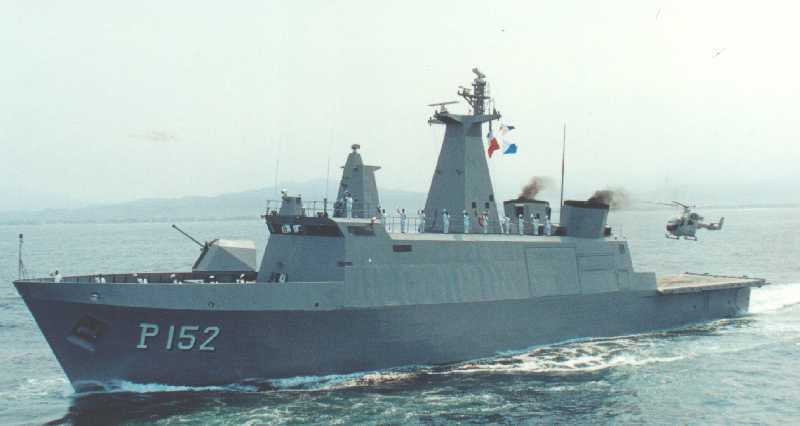
Work on these weapons began in 1962 based largely upon experience gained with the Bofors 57 mm/60. Compared with that weapon, the major improvements of the Mark 1 were a higher rate of fire, the use of new munitions including an improved proximity fuse, water cooling for the gun tubes and a new electro-hydraulic system for rapid training and elevation. The Mark 1 was exported to Malaysia and (the former) Yugoslavia.
The Mark 2 was a lighter weight mounting and used a new servo system that reduced aiming errors and damping time. The gun barrel for this mounting used a special monobloc steel that eliminated the water jacket Bofors claimed that this gun was dual-purpose in that it was accurate and agile enough to destroy sea-skimmers and that it could put more explosives into a surface target in thirty seconds than any gun smaller than 10 cm (3.9"). In reviewing this weapon, the US Navy concluded that it was heavy when compared to the OTO-Melara 35 mm and 76 mm weapons. About 25 Mark 2 guns were manufactured.
The Mark 3 is the latest version. This mounting uses the same ammunition as the Mark 2 but also can fire "smart" ammunition. The Mark 3 is offered with an optional low radar profile (RCS) mounting which hides the gun barrel when not in use. It is claimed that the Mark 3 has a mean time to repair of 30 minutes and can be installed on ships as small as 150 tons (152 mt). This mounting uses a small radar mounted on the gun barrel to measure muzzle velocity for fire control purposes. The dual-hoist system allows instant switching between ammunition types, but rounds must be removed manually in case of misfire. This mounting can open fire at 45 degrees training and 35 degrees elevation from the stand-by condition in 2.2 seconds. The mounting is normally remotely controlled, but can be used in a gyro-stabilized local control mode.
Bofors was taken over by United Defense, which in turn has been taken over by BAE Systems.
A 30 September 2003 United Defense press release stated that the United States Coast Guard had selected the Mark 3 to arm its new Maritime Security Cutter, Large (WMSL, formerly the National Security Cutter). At that time, the USN designated this weapon as the "EX-57 Mk 3" with the "EX" standing for "Experimental." The first WMSL was originally scheduled to enter service in 2006, but this has been delayed for various reasons to the spring of 2008.
A 13 January 2004 United Defense press release stated that the USN designation for the Bofors Mark 3 had now been changed to "EX 110 Mod 0" at the request of the USN. This change of designation followed a successful firing test of 29 practice rounds and 26 rounds of 3P service ammunition at the Dahlgren Main Range in Dahlgren, Virginia. The initial test firings were conducted to verify the test range instrumentation and to document the gun system's characteristics for the upcoming Test Readiness Review of the EX 110 Mod 0 gun safety qualification project.
In September 2004, the Coast Guard announced that this weapon had been accepted into service and would now be designated as the Mk 110 Mod 0/57mm Gun. An article by Lt. Timothy Hacket (USCG) in the October 2004 issue of "Deepwater News" reported that: "Between November 2003 and September 2004, well over 2,000 rounds of 57 mm ammunition were successfully test fired. The test firings have been conducted in three phases to evaluate blast effects, ballistics, and serviceability . . . The serviceability testing included multiple 120-round firing evolutions at high firing rates to determine the gun's sustainability. During one week's course of firing, the test team successfully fired well over 620 rounds and collected a wealth of data . . . A nomenclature request has been submitted to establish the WMSL's GWS [Gun Weapon System] to include the Mk 110 Mod 0/57 mm Gun, Mk 46 Mod 1 Optical Sighting System, AN/SPQ-9B Radar, and the Mk 160 Gun Control System ballistic computer."
A 25 October 2004 United Defense press release stated that the USN had selected the Mark 110 "as the Close-In Gun System (CIGS) for the baseline design of the new DD(X) Destroyer program . . . The function of the Mk 110 Naval Gun is to provide key ship self-protection and attack capabilities. The Mk 110 will work in concert with other combat systems being developed by United Defense, such as the ship's 155-mm Advanced Gun System (AGS) and the Mk 57 Vertical Launching System."
In a 01 November 2004 USCG Press Release concerning a day of Human Systems Integration (HSI) testing on the 57 mm Mark 110, participant GM3 [Gunner's Mate 3rd Class] Robert Boyer reported that "[the 57 mm Mark 110] is a huge upgrade from the 76 mm. As far as maintenance and accuracy of the new weapon, the all-around ability is a lot easier to handle compared to our current armament. I'll definitely look forward to working on the 57 mm gun." In this same release, Gunner's mate PO3 [Petty Officer 3rd Class] Mike Sanders is quoted as saying that it "only takes up to three people for loading or unloading the 57 mm with more room to move compared to seven people loading or unloading the 76 mm."
A 01 August 2005 BAE Press Release announced that the USCG has purchased two of these weapons, with delivery scheduled for January 2006 and December 2006. These guns will be manufactured at the BAE Systems facility in Louisville, Kentucky.
In April 2007 BAE Systems announced that it had received its second contract from General Dynamics for $7.2 million to supply a 57 mm Mark 110 for the U.S. Navy's fourth Littoral Combat Ship (LCS-4). The contract includes options such as spare parts and training.
In August 2014 the USN announced that it had replaced the 57 mm guns on the DDG-1000 Zumwalt class with 30 mm Bushmaster weapons.
Munitions are produced by BAE (Bofors), Sako Limited (Finland), SME Ordnance (Malaysia) and Nammo Raufoss (Norway).
| Designation | Sweden: 57 mm/70 (2.25") Marks 1, 2 and 3
USN: 57 mm/70 (2.25") Mark 110 Mod 0 [equivalent to the Mark 3] |
|---|---|
| Ship Class Used On | Mark 1
Sweden: Hugin, Spica I and Spica II classes Finland: Helsinki class Mark 2
Mark 3
|
| Date Of Design | Mark 1: 1964
Mark 2: 1981 Mark 3: 1995 |
| Date In Service | Mark 1: 1966
Mark 2: 1985 Mark 3: 1998 |
| Gun Weight | N/A |
| Gun Length oa | Rear of breech assembly to forward face of flash hider: 180.2 in (4.577 m) |
| Bore Length | about 157.1 in (3.990 m) 1 |
| Rifling Length | 139.49 in (3.543 m) |
| Grooves | 24 grooves |
| Lands | N/A |
| Twist | Increasing RH 1 in 46 to 1 in 20 |
| Chamber Volume | N/A |
| Rate Of Fire | Mark 1: 200 rounds per minute cyclic
Mark 2: 220 rounds per minute cyclic - Time to reload 120 rounds: 2 minutes Mark 3: 220 rounds per minute cyclic |
- ^The gun barrel itself is 159.25 in (4.045 m) long without the flash hider and 171.06 in (4.345 m) long with the flash hider.
- Typical dispersion of the Mark 3 for elevation (s-value) is 0.4 mrad while that for training (s-value) is 0.4 mrad.
| Type | Fixed |
|---|---|
| Weight of Complete Round | PFHE: 13.4 lbs. (6.1 kg)
HCER: 14.3 lbs. (6.5 kg) HE: 13.4 lbs. (6.1 kg) 57 3P 1a 2a: 13.4 lbs. (6.1 kg) Mark 332: HE 4-Bolt Guided (HE-4G) projectile: about 14.3 lbs. (6.5 kg) 3a |
| Length of Complete Round | 26.6 in (67.53 cm) |
| Projectile Types and Weights 4a | PFHE: 5.3 lbs. (2.4 kg)
HCER: 6.2 lbs. (2.8 kg) HE: 5.3 lbs. (2.4 kg) 57 3P: 5.3 lbs. (2.4 kg) |
| Bursting Charge | PFHE: 0.84 lbs. (0.38 kg)
HCER: 0.90 lbs. (0.41 kg) HE: 0.99 lbs. (0.45 kg) 57 3P: >8,000 fragments propelled by PBX |
| Overall Length | PFHE: 12.3 in (31.2 cm)
HCER: 13.4 in (34.1 cm) HE: 12.2 in (30.9 cm) 57 3P: N/A |
| Propellant Charge | 2.6 lbs. (1.19 kg) NC1066 |
| Cartridge | 57 mm x 438 mm |
| Muzzle Velocity | PFHE: 3,360 fps (1,025 mps)
HCER: 3,120 fps (950 mps) HE: 3,360 fps (1,025 mps) 3P: 3,396 fps (1,035 mps) |
| Working Pressure | N/A |
| Approximate Barrel Life | Mark 3: 5,300 rounds |
| Ammunition stowage per gun | Mark 1: 40 ready rounds, 128 rounds in ready racks in mount
Mark 2: 120 ready rounds, up to 40 rounds in dual hoists 5a Mark 3: 120 ready rounds, up to 40 rounds in dual hoists, 1,000 rounds in mounting 5a |
- ^Bofors 57 mm 3P (Pre-fragmented, Programmable, Proximity-fuzed) all-target programmable ammunition allows 3 proximity fuzing options as well as settings for time, impact, and armor piercing functions.
- ^The USN has designated the 3P ammunition as Mark 295 Mod 0.
- ^The HE-4G is being developed by L3 Mustang’s Advanced Low-Cost Munitions Ordnance (ALaMO) program. This projectile can make a course correction by firing four bolts in sequence.
- ^The Mark 1 gun with a minor modification could use ordnance developed for the Mark 2 gun.
- ^5.15.2The Mark 2 and Mark 3 loader and gun mount are dual-sided so that two types of ammunition can be handled simultaneously. Ammunition comes up from the magazine via two hoists and goes into two 20-round cassettes mounted on a rail behind the gun. When filled, they move into position over the ready-use magazines and discharge their ammunition into them. There are also two intermediate 20-round cassettes.
| Elevation | Distance |
|---|---|
| 45 degrees | HCER: 18,600 yards (17,000 m) |
| 45 degrees | HE: 15,090 yards (13,800 m) |
| AA Ceiling | PFHE: 24,930 feet (7,600 m) in proximity fuze mode |
| Designation | Single Mounts |
|---|---|
| Weight 1b | Mark 1: N/A
Mark 2: 14,300 lbs. (6,500 kg) Mark 3: 16,535 lbs. (7,500 kg) |
| Elevation | Mark 1: -10 / +78 degrees
Mark 2: -10 / +75 degrees Mark 3: -10 / +77 degrees |
| Elevation Rate | Marks 1 and 2: 40 degrees per second
Mark 3: 44 degrees per second |
| Train | 360 degrees |
| Train Rate | Marks 1 and 2: 55 degrees per second
Mark 3: 57 degrees per second |
| Gun recoil | N/A |
- ^These mounting weights do not include ammunition. The Mark 3 mounting with 1,000 rounds ammunition has a total weight of 30,865 lbs. (14,000 kg).
- These mounting are powered by 440 Vac 60 Hz 3 phase.
- The length of the ammunition hoists can be adjusted to fit different applications from 77 to 386 inches (196 to 980.5 cm).
- DDG-1000 would have used a special low-RCS mounting similar in design to that for the 155 mm AGS.
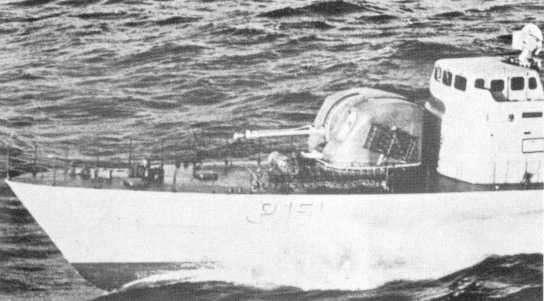
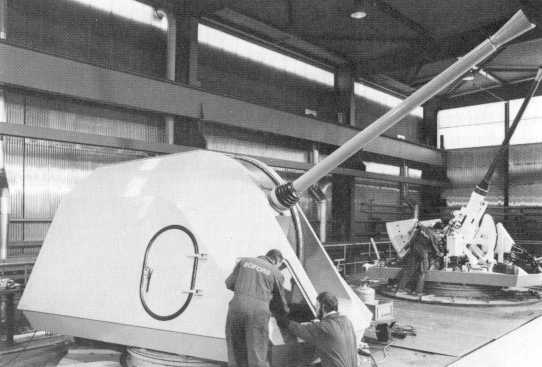
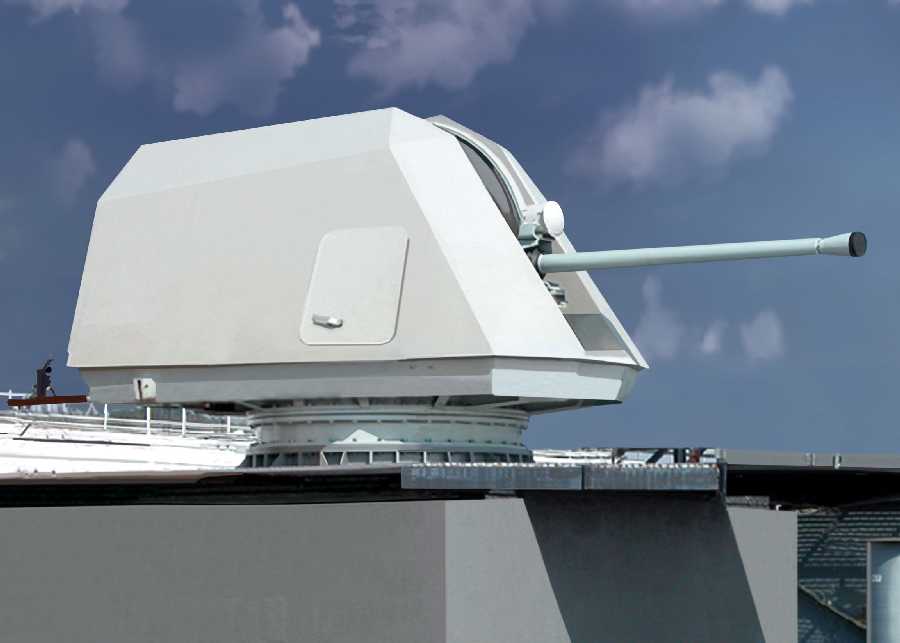
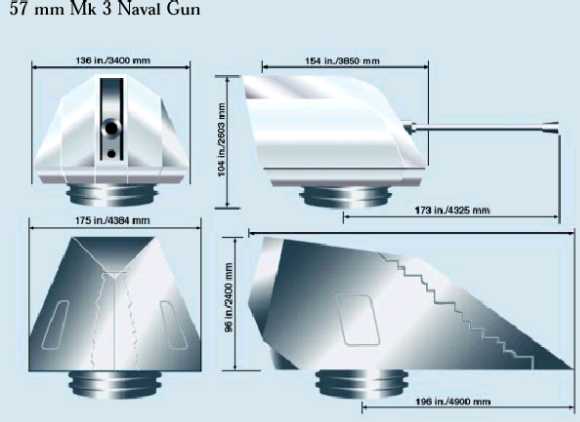
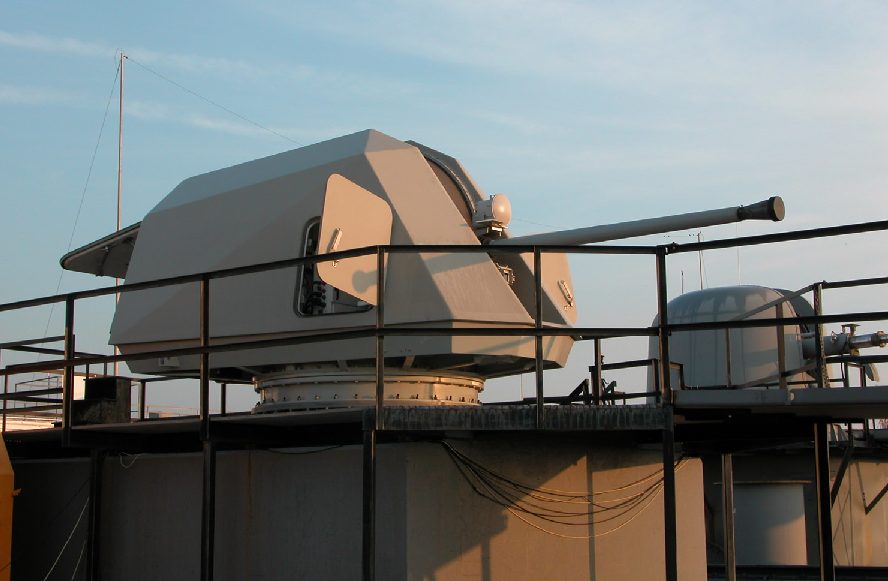
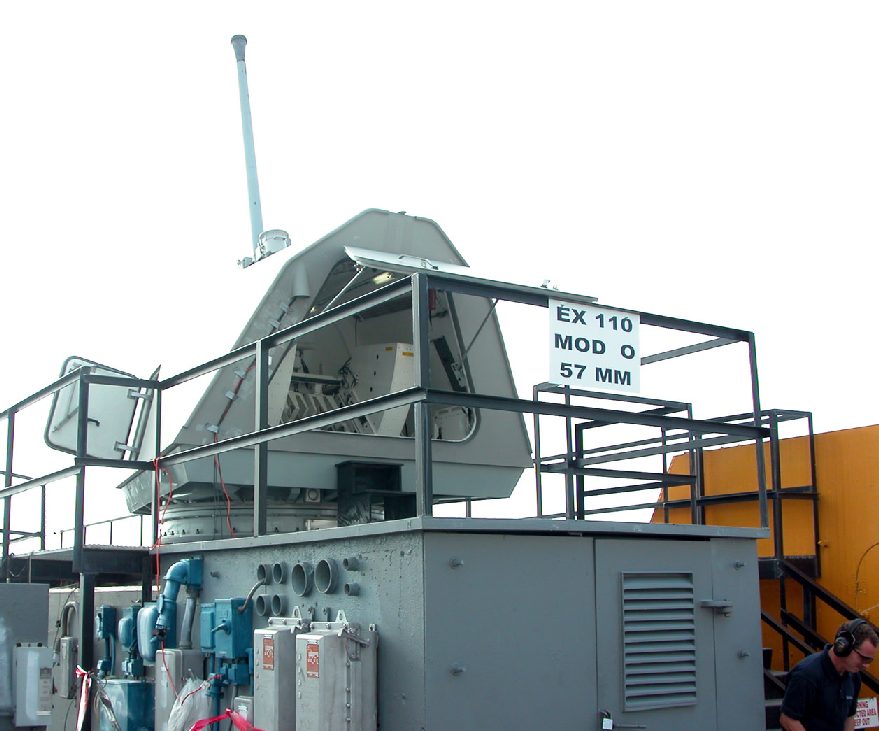
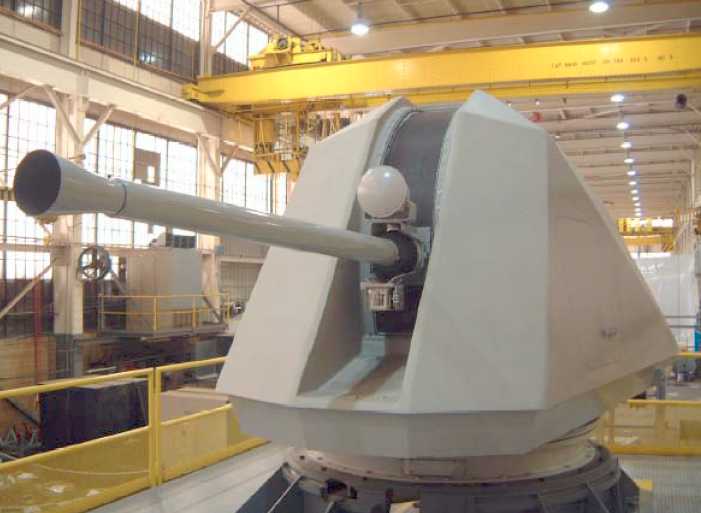
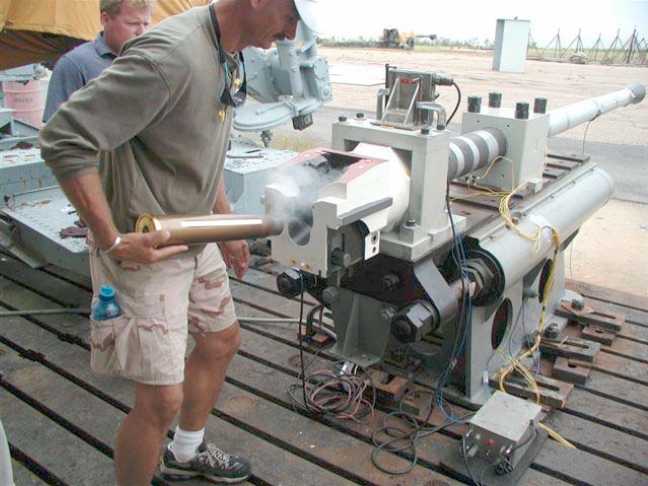
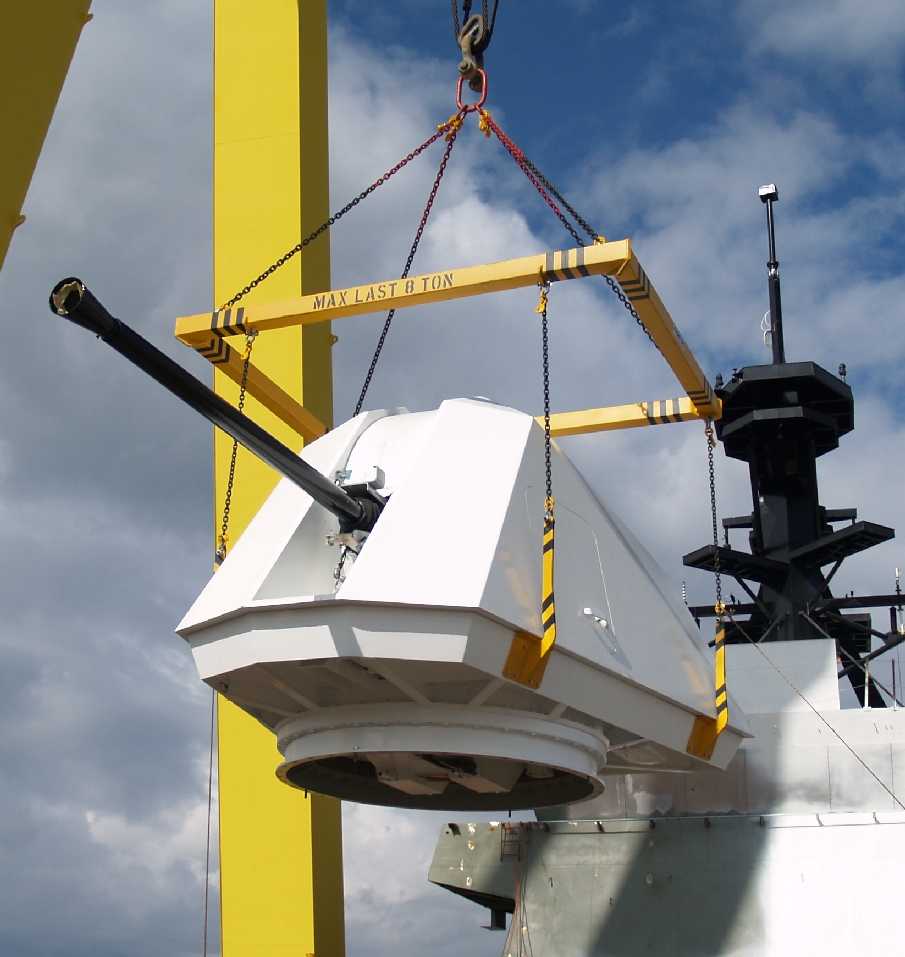

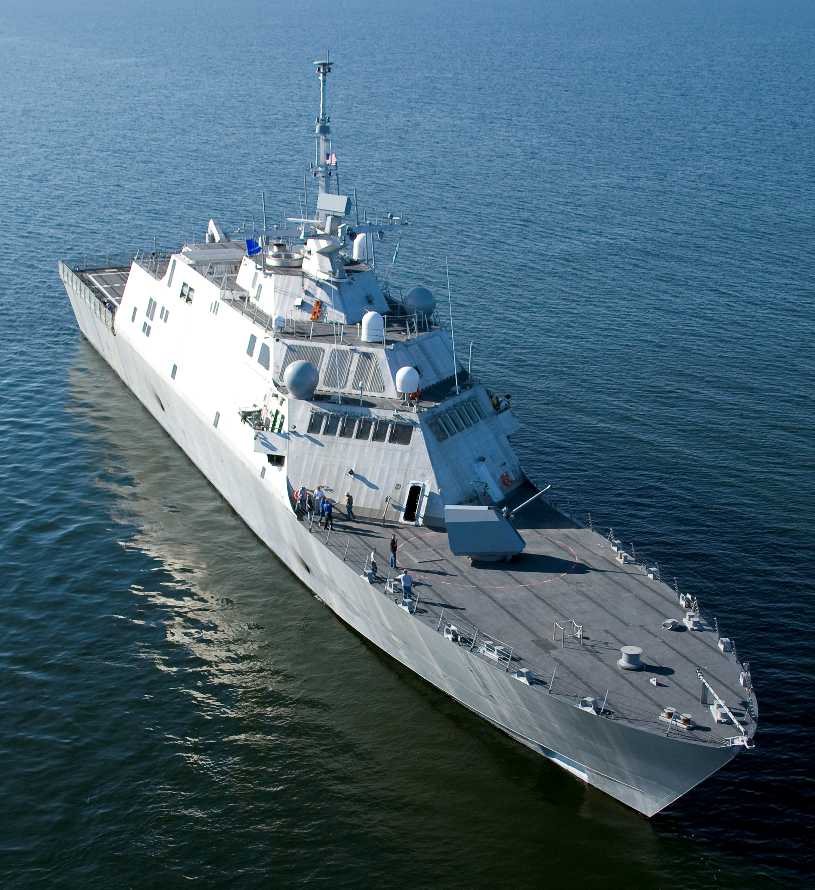
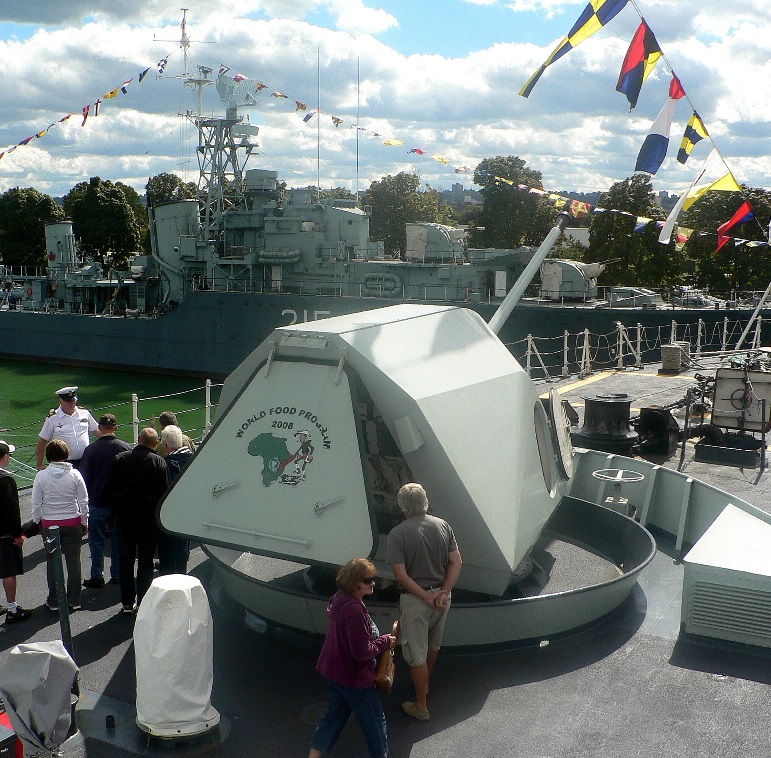
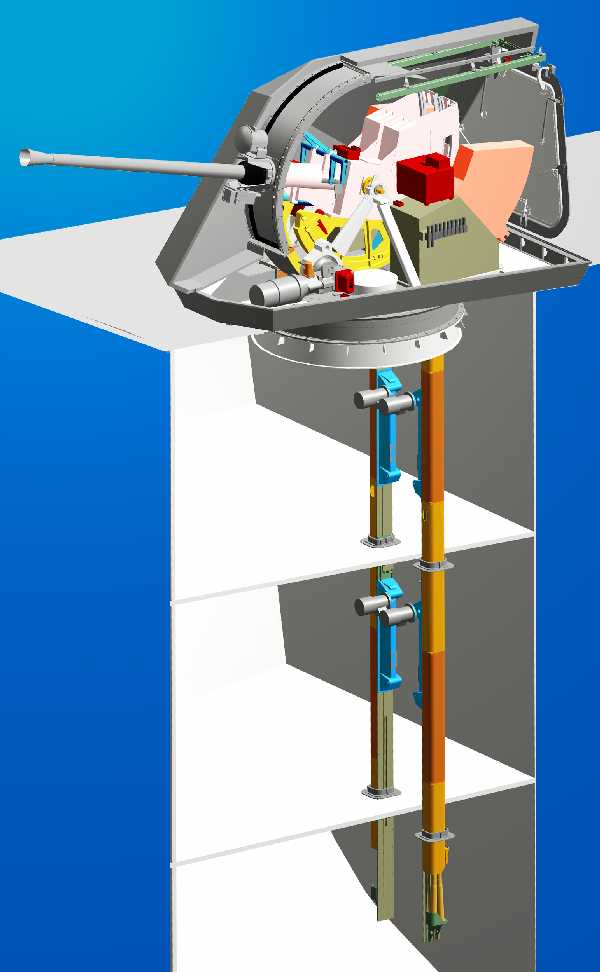
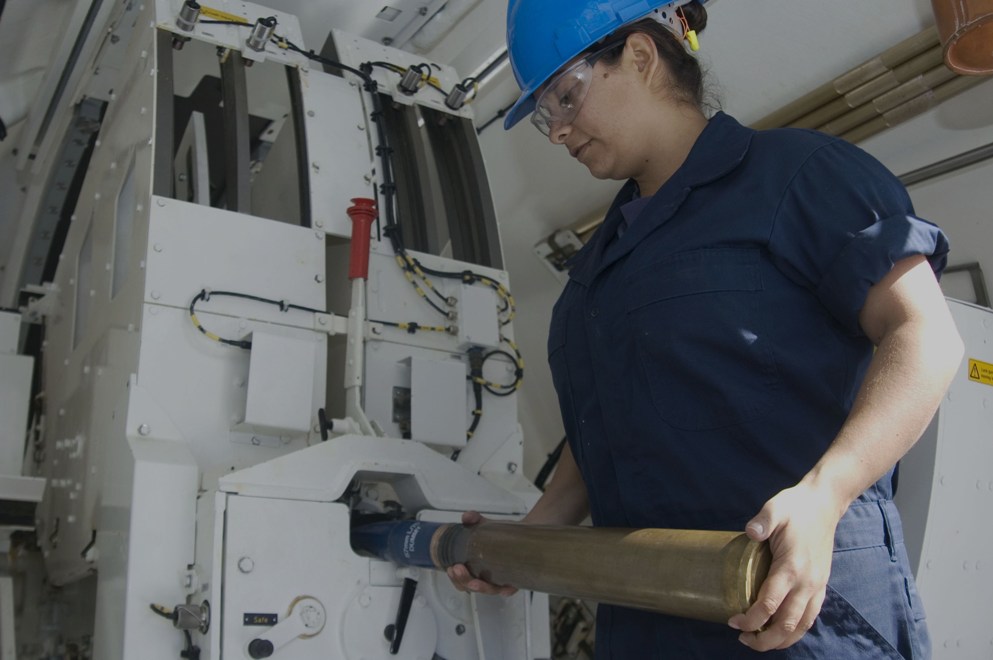
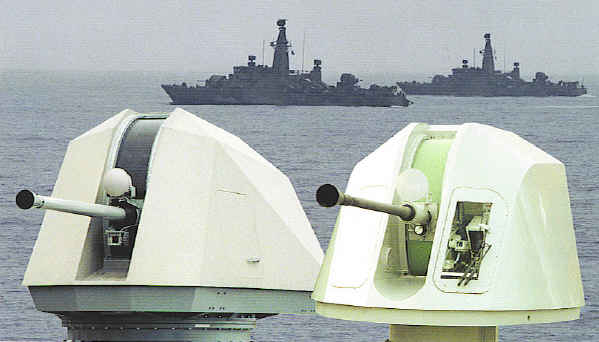
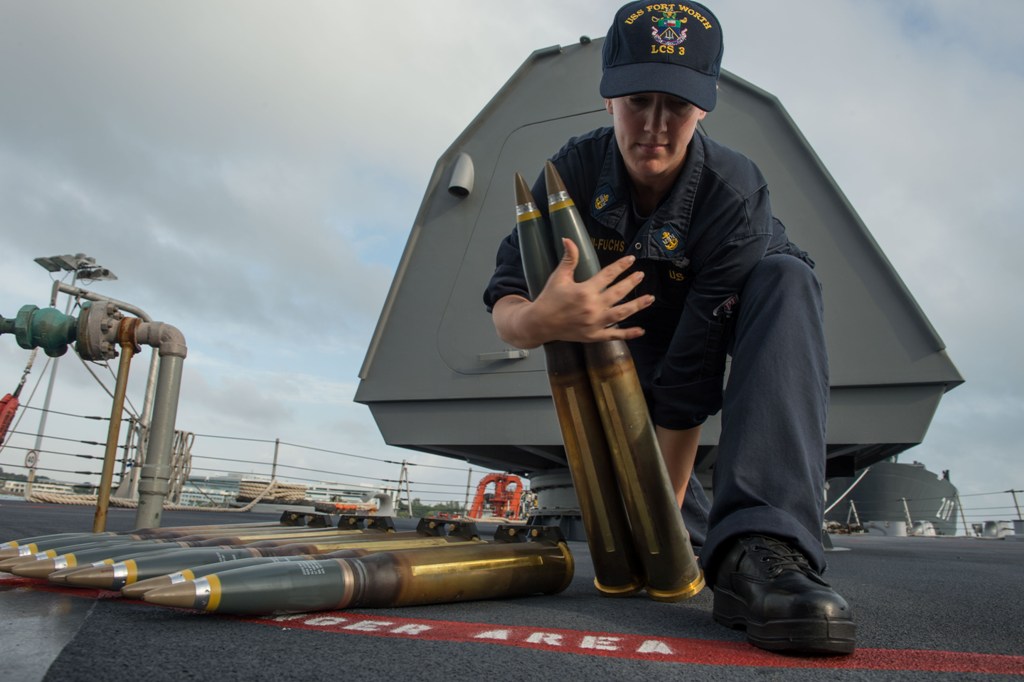
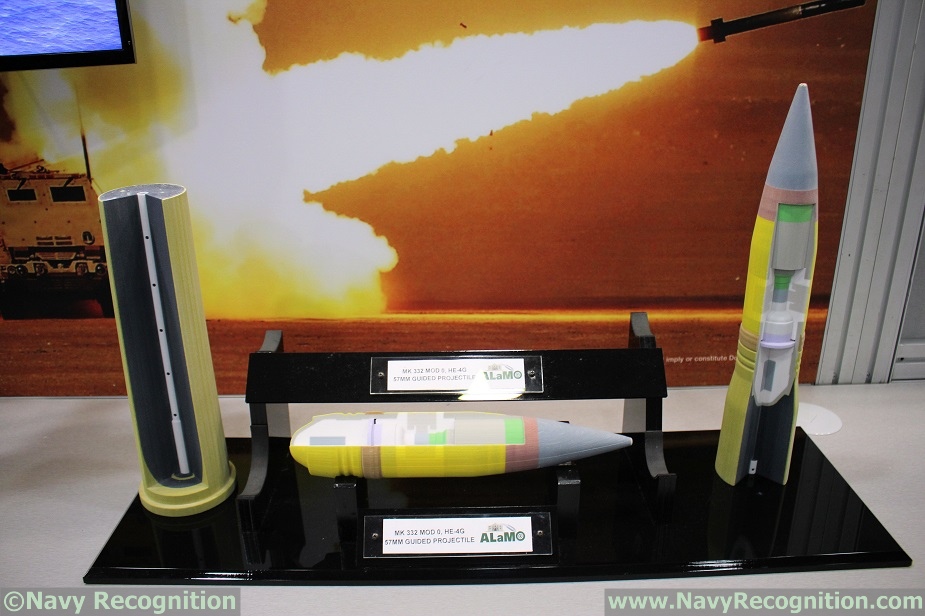
United States Coast Guard
Video #1 and
Video #2 of 57 mm gun in action
Ammunitionskatalog Marinen, 1990
"Jane's Pocket Book 9: Naval Armament" edited by Denis Archer
"The Naval Institute Guide to World Naval Weapon Systems 1991/92" by Norman Friedman
"Jane's Ammunition Handbook: Ninth Edition 2000-2001" edited by Terry J. Gander and Charles Q. Cutshaw
"Jane's Fighting Ships, 1999-2000" edited by Capt. Richard Sharpe RN
---
Articles and presentations by Lt. Timothy Hackett:
- October 2004 issue of "Deepwater News" article "57mm Gun for WMSL Completes Test Firing Series" by Lt. Timothy Hackett, USCG
- "USCG 57mm / Mk 3 Gun Mount: Test, Evaluation & Certification Program" by Lt. Timothy Hackett, USCG, presented at the NDIA 39th Annual Armament Systems: Guns - Ammunition - Rockets - Missiles Conference & Exhibition
- "Mk 110 Mod 0 / 57mm Naval Gun & Ammunition Certification Process" by Lt. Timothy Hackett, USCG, presented at the NDIA 40th Annual Armament Systems: Guns - Ammunition - Rockets - Missiles Conference & Exhibition
---
Press releases from:
- BAE Systems
- Bofors Defence
- United Defense
- USCG Integrated Deepwater System
---
Flash Presentation at United Defense
---
Special help from Lt. Timothy Hackett, USCG, Mats T. Persson and Leo Fischer
10 April 2008 - Benchmark
04 December 2008 - Added USCG picture of test round being loaded, added new Off-site Video links
30 April 2013 - Added picture of HMCS Ville de Quebec
22 November 2014 - Added comment regarding DDG-1000 replacing 57 mm with 30mm guns. Removed sketches of 57 mm guns being used on DDG-1000,
08 April 2015 - Added photograph of ammunition
04 December 2020 - Converted to HTML 5 format
15 May 2021 - Added ALaMO information and photograph
15 May 2022 - Added use on UK Type 31 Frigate
